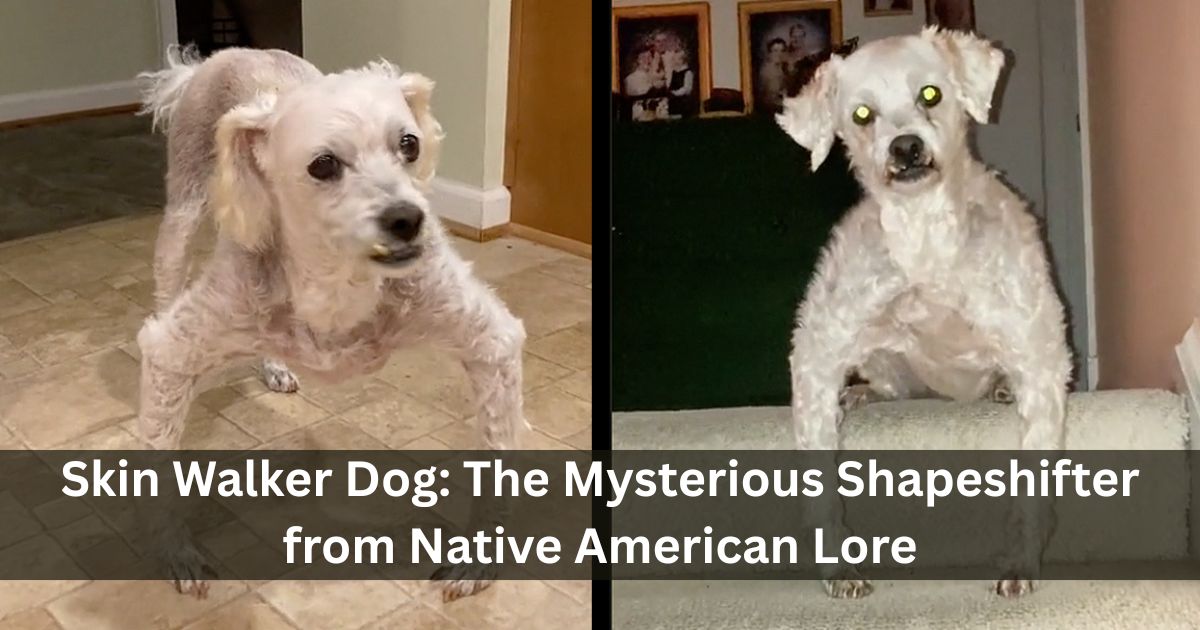
In the realm of folklore and paranormal legends, few tales are as spine-chilling as that of the skin walker dog. Often whispered around campfires or shared in hushed tones among Native American communities, this mysterious creature is said to walk the line between the natural and supernatural. But what is a skin walker dog, and why has it captured the imagination of so many?
In this blog, we’ll explore the origins, myths, sightings, and modern interpretations of the skin walker dog, offering an easy-to-understand yet comprehensive look at one of the most chilling legends in American folklore.
What Is a Skin Walker Dog?
The skin walker dog originates from Navajo mythology, where it is closely tied to the concept of the “Skinwalker” – a human who can transform into an animal through witchcraft. In many stories, these shape-shifters can assume the form of wolves, coyotes, bears, or dogs. Among these forms, the dog is particularly feared due to its familiarity and presence in everyday life.
A skin walker dog is not a regular animal. According to legend, it is a supernatural being with malicious intent, capable of mimicking canine behaviors while retaining a disturbing, human-like awareness. In Navajo language, a Skinwalker is called a yee naaldlooshii, which translates roughly to “with it, he goes on all fours.”
These creatures are believed to possess dark powers that allow them to manipulate both humans and animals, spread illness, and escape capture through supernatural means.
The Origins of the Legend
The skin walker dog legend is deeply rooted in Native American traditions, especially those of the Navajo, Hopi, and Ute tribes. Unlike modern horror stories designed purely to frighten, these tales often serve as moral lessons or warnings about the misuse of power.
According to Navajo beliefs, Skinwalkers were once respected healers and medicine people who turned to evil practices. Through rituals involving taboo acts, including murder or grave desecration, they gained the ability to transform into animals.
The dog form is often highlighted in stories because of its role as both companion and guardian. A dog turned evil is symbolic of ultimate betrayal and inversion of natural order.
Sightings and Modern Interpretations
While most consider the skin walker dog a myth, there have been numerous reports of sightings in the American Southwest. These accounts typically describe:
- Dogs with glowing red or yellow eyes
- Canines that walk upright like a human
- Animals that vanish into thin air or move unnaturally fast
- A foul, rotting odor accompanying the creature
- A feeling of dread or being watched
These sightings have inspired podcasts, YouTube documentaries, and horror fiction. Some people believe that the stories could be based on real animals with deformities or misidentified wildlife. Others suggest these experiences are hallucinations, hoaxes, or a psychological response to fear and folklore.
Still, a significant number of people remain convinced they’ve witnessed a real skin walker dog, especially near remote areas of Utah, Arizona, and New Mexico.
Is There Any Scientific Evidence?
From a scientific standpoint, there is no verified evidence that skin walker dogs exist. Most cryptozoologists and anthropologists agree that the legend is part of a larger pattern of shapeshifter myths found across various cultures. Similar stories appear in Norse mythology (berserkers), African folklore (werehyenas), and European tales of werewolves.
That said, the cultural significance of the skin walker dog in Native communities should not be dismissed. These stories reflect deeply held beliefs and serve important spiritual and social functions. Whether literal or metaphorical, they offer insight into how societies perceive good, evil, transformation, and the unknown.
How to Identify a Skin Walker Dog
Although we don’t recommend approaching any strange or aggressive dog-like creature, folklore suggests several ways to recognize a skin walker dog:
- Unnatural movement: Walking on two legs, jerky motions, or seeming too coordinated for a real animal
- Odd eyes: Eyes that glow in the dark or reflect light in strange ways
- Inexplicable behavior: Mimicking human speech, understanding commands it shouldn’t
- Fear reaction: Animals (like horses or other dogs) reacting strongly to its presence
Of course, these signs are based on legend and should be taken with caution and respect.
Can You Protect Yourself from a Skin Walker Dog?
In Navajo tradition, speaking openly about Skinwalkers can invite their attention. As a result, many people avoid the topic altogether. However, some believe protective rituals can ward off evil spirits, including:
- White ash or sacred herbs (like sage or cedar) used in cleansing ceremonies
- Carrying sacred stones like turquoise
- Avoiding areas known for paranormal activity, especially after dark
Again, these practices are rooted in spiritual tradition rather than scientific evidence, but they’re taken seriously by many.
FAQs About Skin Walker Dogs
Q1: What is a skin walker dog?
A skin walker dog is a creature from Navajo legend, said to be a shapeshifting witch or shaman that takes the form of a dog to carry out malevolent deeds.
Q2: Are skin walker dogs real?
There is no scientific proof that they exist, but many people believe in them due to cultural stories and reported sightings.
Q3: Where are skin walker dogs usually seen?
Most reports come from the American Southwest, especially Utah, Arizona, and New Mexico, near Native American lands.
Q4: Is it dangerous to talk about Skinwalkers?
According to Navajo tradition, speaking of them can attract them. Many people avoid mentioning them for this reason.
Q5: What should I do if I think I see one?
Respect local beliefs. Avoid the area, don’t confront the creature, and seek the advice of elders or community leaders familiar with the legend.
Final Thoughts
Whether you view the skin walker dog as a chilling myth, a cautionary tale, or a supernatural reality, there’s no denying its hold on the human imagination. From its Native American roots to its place in modern urban legend, this shapeshifter continues to blur the line between folklore and fear.
Legends like the skin walker dog serve as a powerful reminder of how ancient stories can survive in a digital age. They echo our collective fears, moral boundaries, and desire to understand the unknown.
For More: https://inspireyourmindset.com/





